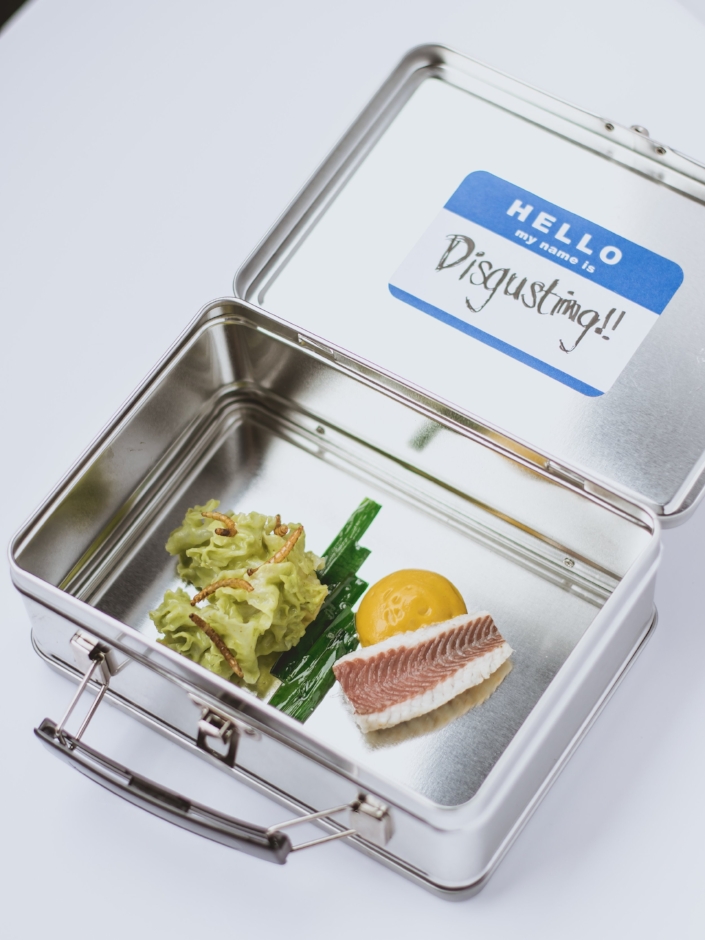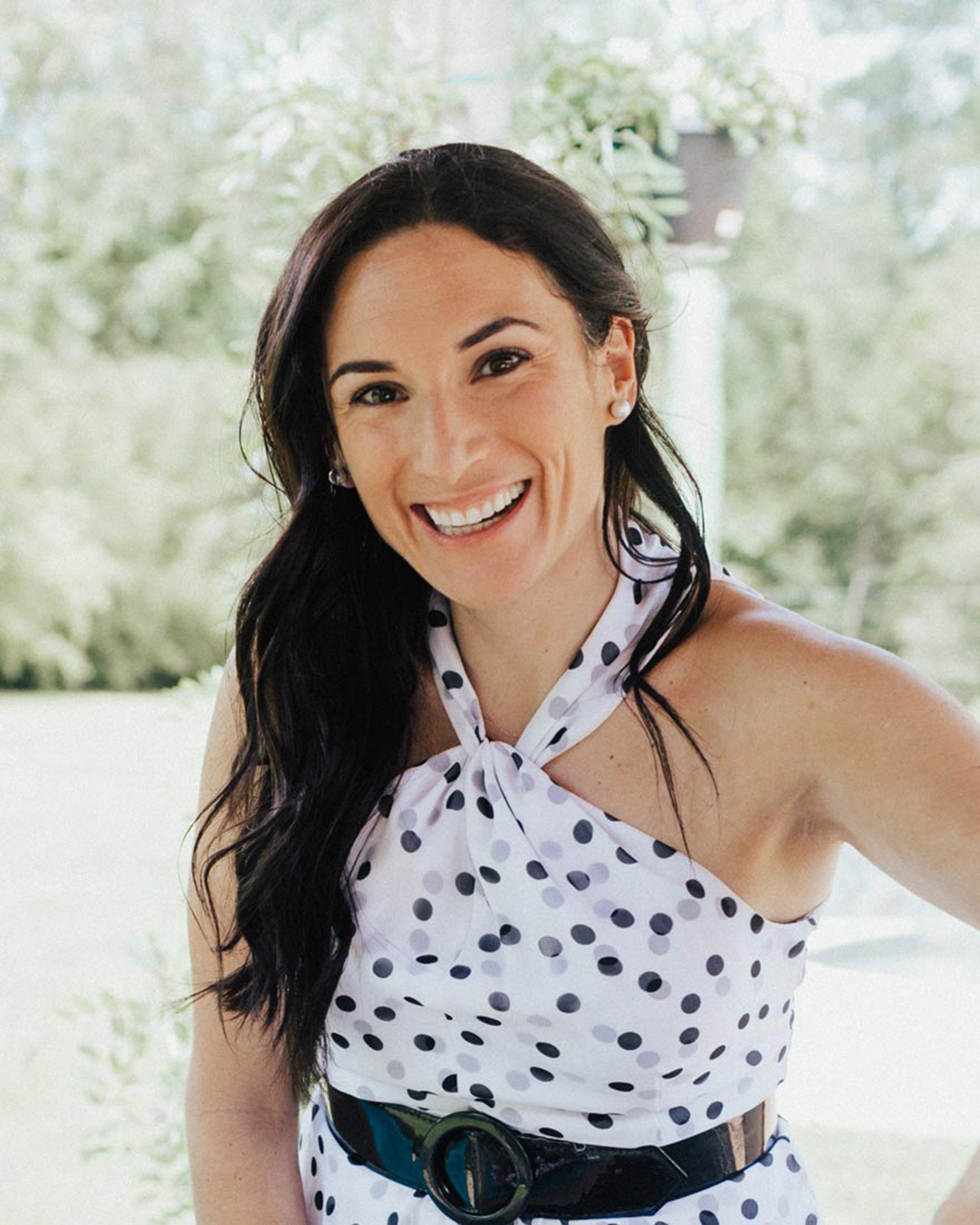
To close our series on school lunch, we invited three guests to round out the conversation on lunch packing duty. Heather McKay, a mom and veteran elementary school teacher, shared her perspective and brilliant tips as someone who’s watched countless children unpack their lunchbox. Laura Fuentes of MOMables chimed in on school lunch and allergies — even when the allergies aren’t your child’s own. And artist and chef Jenny Dorsey shared her genius project exploring school lunch, culture and privilege, which unexpectedly pushed Meghan to reevaluate her own childhood brown bag lunches. It got deep.
In the end, though each guest came to speak to us about completely different things, from completely different perspectives, Meghan and Stacie came away with one piece of advice:
Not going it alone and connecting with others is key to making packing lunches an easier, or at least more gratifying, task.
A Teacher Spills the Beans on Lunch at School
Packing school lunch can often be a chore with no reward, especially when apples come home uneaten day after day (which is apparently a major thing; #savetheapples?). We took our own Try This at Home advice from episode one and asked teacher Heather McKay, Stacie’s younger’s son second grader teacher, our burning school lunch questions.
Heather gave us the inside scoop on what happens in that moment when kids open their school lunch to see what you’ve packed, and also in the moments following. And guess what? It’s not the same for every kid, though there are definitely patterns. Heather would know: She was a classroom teacher for 14 years.
The big takeaway for us is that the most helpful thing you can do is connect with your kid’s teacher and also with your kid. Learn more about what’s happening at lunch time at school, and pay attention to how your child eats lunch at home since it’s not going to be much different at school. If anything, they’ll be more distracted and eat less.
Listen for even more specific tips and insights.

Food Allergies at School: A Community Concern
Stacie and MOMable’s CEO Laura Fuentes have a “let’s get real” moment — or two — about the true responsibility involved in packing well-balanced, allergy-friendly school lunches. The impact on our children’s health and the health of the children in our larger community is at stake, and Laura makes no apologies that it matters and is worth the work. Because, yes, some prep is required.
It’s manageable, though, especially with Laura’s tips and recipes. She dished on the easiest way to help your kid through a new food allergy, how to support a child with food allergies in your community even if yours doesn’t have one, and how to help your child, food allergies or not, start making healthy food choices on their own as they grow older.
And guess what it all comes down to: A whole lot of communication and connection, talking and understanding.
You know, and some cooking too! Some of the tasty recipes Laura mentions include:
- Allergy friendly cake (pictured)
- Chocolate Protein and fiber balls
- Oatmeal Energy bites
- Pizza Quiches
- Spinach & Bacon quiches
- Easy Lunchbox Quiches
- Paleo Chocolate cake

School Lunch, Community, and Connection
We were originally drawn to Jenny Dorsey on Instagram (@chefJennyDorsey) because, well, her feed is gorgeous. And then a school lunch box labeled “Disgusting” filled with Chinese delicacies popped into her feed (pictured). We immediately knew we had to talk to her.
We’ve chatted about the concept of not “yucking someone’s yummy” at the dinner table, but Jenny’s experience as a young Chinese immigrant in an American school cafeteria compels us to think about how we need to expand the idea beyond the family table. And not just for young kids either.
The conversation extends to older kids too. In fact, it’s quite relevant for every kid growing up in America today. For example, think about how middle schoolers can help their cafeterias move on from Taco Tuesday to more meaningful explorations of food and culture that pull from cultures and families in their community, helping the kids connect and learn from one another.
School lunch can really help facilitate that. And pain in the butt as it may be, that makes it worth it.
That is the beauty of food. Even school lunch. Maybe especially school lunch.
We Love Our Sponsors
A big thank you to Elmhurst and One Potato for sponsoring this week’s episode and for generously sharing discount codes to our listeners. Read below for more!
![Elmhurst plant-based milks | Didn't I Just Feed You podcast [sponsor]](https://images.squarespace-cdn.com/content/v1/5b0da7065ffd2055a9a6f85a/1533747472078-2TS77OYPM3E3YLKVVLB7/ke17ZwdGBToddI8pDm48kM9PDEvyqJYzwM0s5q_LSdtZw-zPPgdn4jUwVcJE1ZvWQUxwkmyExglNqGp0IvTJZamWLI2zvYWH8K3-s_4yszcp2ryTI0HqTOaaUohrI8PI4N7TIHh2HWYR1Ps-rQFL4eSXKdEnWut4ffZa82fQINsKMshLAGzx4R3EDFOm1kBS/Elmhurst+plant-based+milks+%7C+Didn%27t+I+Just+Feed+You+podcast+%5Bsponsor%5D)
Stacie’s a huge fan of Elmhurst. Because when you’re a food writer who feeds a dairy-loving family of four, but one kid just can’t tolerate milk, you get pretty serious about finding the healthiest and most delicious plant-based milks on the market. And if you ask her, Elmhurst is it.
Elmhurst plant-based based milks have more nutrition and whole grains than other leading brands and are made without gums, emulsifiers, or carrageenan. Their nut milks have four times the nuts and nutrition compared to other leading brands, and their oat and brown rice milks have a whopping 20 grams of whole grain per glass!
Most importantly, Elmhurst tastes delicious. Even the dairy drinkers in Stacie’s family are fans. Good thing all the varieties come packed in shelf stable packages that keep in your pantry so she can stock up. If you want to do the same, use the code HUNGRY for 20% off your next order at Elmhurst1925.com.
![One Potato organic meal kit delivery service designed especially for families | Didn't I Just Feed You podcast [sponsor]](https://images.squarespace-cdn.com/content/v1/5b0da7065ffd2055a9a6f85a/1533744264901-YMAREN619J9D860WO4W3/ke17ZwdGBToddI8pDm48kCVVg133BtoU-simL13_FP5Zw-zPPgdn4jUwVcJE1ZvWQUxwkmyExglNqGp0IvTJZamWLI2zvYWH8K3-s_4yszcp2ryTI0HqTOaaUohrI8PIPx_36UgBnUJpTF9HUA-8qxprABunWTMWKFT8NybUDJsKMshLAGzx4R3EDFOm1kBS/One+Potato+organic+meal+kit+delivery+service+designed+especially+for+families+%7C+Didn%27t+I+Just+Feed+You+podcast+%5Bsponsor%5D)
One Potato is the first organic meal delivery service made with families in mind. Each week, One Potato delivers semi-prepared ingredients like chopped veggies, prepped sauces, and sometimes even cooked, shredded chicken that come together to make meals that both kids and parents love in no time flat.
Each week, you can choose to receive 2 or 3 meals from 10 options, including gluten- and nut-free choices, and you can customize meals to your family’s size. Also, every meal comes with tips on how to encourage kids to try new foods. Genius!
To learn more about One Potato, visit onepotato.com and use the promo code FEED30 for 30% your first box!
This Week’s Guests
This week, we skipped What We’re Digging to give our guests all the airtime. You can catch up with Stacie @staciebillis or Meghan @stirandscribble on Instagram for their personal updates.

Heather McKay
Heather McKay was a second grade teacher for 14 years and currently works as the Language Arts Coordinator at her school. She lives in Brooklyn, New York with her husband and 3- and 6-year-old children. She enjoys cooking and trying new recipes and, like many of us, she is on a quest to find meals that bring stellar reviews, or at least minimal complaints, from her children.

Laura Fuentes
Laura is, among her many roles, the CEO and founder of MOMables where she helps moms live their best life with fresh recipes and practical advice on health and wellness from a working mom. This includes her take on juggling work, travel, kids, homeschooling, and still managing to get dinner on the table every night.
She’s the mother of three and the author of four cookbooks, including her forthcoming The Taco Tuesday Cookbook.

Jenny Dorsey
Jenny is a professional chef and artist based in NYC. She specializes in fusing culinary arts with social concepts and emerging technology, especially AR/VR. She runs an experimental popup series named Wednesdays, is the Co-Host of Why Food? podcast on Heritage Radio Network and is starting a culinary production studio named Studio ATAO. You can find out more about her at http://jennydorsey.co.
Try This At Home
As we prepare our kids for back-to-school, dust off their backpacks, and start packing lunches, we encourage you to talk with your kids about curiosity, kindness, and community in the cafeteria.
Have a conversation with your children about cultural differences and inclusion. Remind your kids that they can be curious when peeking into their classmates’ lunches without necessarily expressing their opinion (unless it’s a compliment!) or making anyone uncomfortable.
And if they’re older, they should be curious! Food is for bring communities together and offers a great moment to learn more about how we each live. What are their friends eating? If they’re buying the school’s hot lunch, is that what they each eat at home? Can friends band together to see if the school will, over time, explore the foods of the countries and cultures represented by the student body?
And PS: All of this goes for kids with food allergies too! Some kids eat differently because they have to, and a little acknowledgment and sensitivity go a long way.
